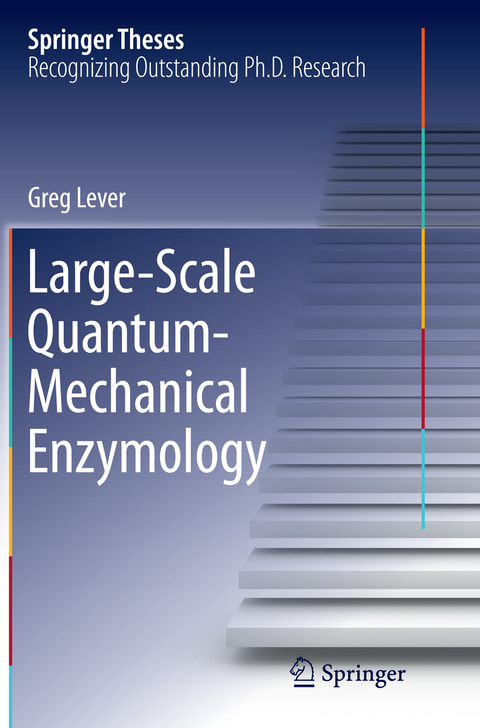
Large-Scale Quantum-Mechanical Enzymology
Springer International Publishing (Verlag)
978-3-319-36947-1 (ISBN)
Greg Lever obtained a first class M.Sc in Theoretical Physics from University College London (UCL) followed by a Ph.D. in Computational Enzymology at the Cavendish Laborator, University of Cambridge. He is now Postdoctoral Associate at the Massachusetts Institute of Technology (MIT) in the Department of Chemical Engineering.
Introduction.- Proteins, Enzymes and Biological Catalysis.- Computational Techniques.- Validation Studies.- Explaining the Closure of CHOMO-LUMO Gaps in Biomolecular Systems.- A Density-Functional Perspective on the Chorismate Mutase Enzyme.- Concluding Remarks.
"The dissertation is beautifully written in clear, precise language. It reads, in fact, almost as a textbook, providing in successive chapters the history, theory, and computational methods as background, then proceeding to discussing a validation computation followed by a detailed analysis of the importance of analyzing boundary conditions, then concluding with an analysis based on total use of DFT, and final thoughts. Anyone interested in this area can learn a great deal from this work." (G. R. Mayforth, Computing Reviews, April, 2016)
| Erscheinungsdatum | 21.10.2016 |
|---|---|
| Reihe/Serie | Springer Theses |
| Zusatzinfo | XVII, 148 p. 30 illus., 12 illus. in color. |
| Verlagsort | Cham |
| Sprache | englisch |
| Maße | 155 x 235 mm |
| Themenwelt | Naturwissenschaften ► Physik / Astronomie ► Angewandte Physik |
| Schlagworte | biochemistry • Biological and Medical Physics, Biophysics • Biophysics • CHOMO-LUMO Gaps • Computational Biology/Bioinformatics • Density Functional Calculations for Enzyme Analysi • Density Functional Calculations for Enzyme Analysis • Energetic structure of biomolecules • Enzyme modelling • Enzymology • Information technology: general issues • Life sciences: general issues • Linear scaling DFT • medical physics • Modelling Enzyme Catalysis • Physical Chemistry • Physics • Physics and Astronomy • Protein modelling • Protein Science • Spectra of biomolecules • Structure of biomolecules • Transition state searching • Understanding enzyme catalysis |
| ISBN-10 | 3-319-36947-4 / 3319369474 |
| ISBN-13 | 978-3-319-36947-1 / 9783319369471 |
| Zustand | Neuware |
| Haben Sie eine Frage zum Produkt? |
aus dem Bereich


